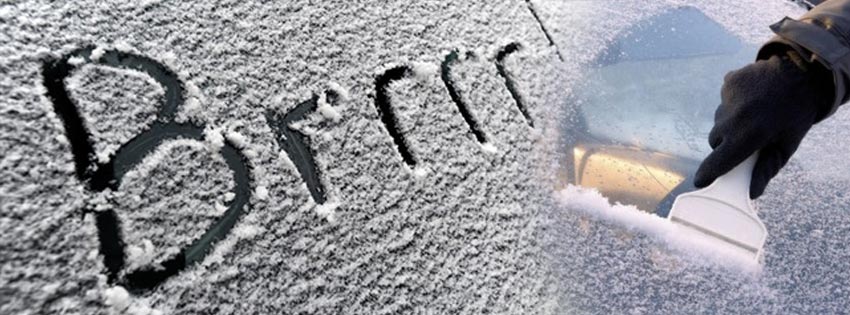
Driving during Cold Weather
– By ANewDriver via RSA
Driving during Cold Weather – Taking a number of simple precautions can ensure safety on Irish roads during winter. Don’t get caught out if severe weather hits, make the necessary checks on your vehicle now.
There are a number of simple precautions the RSA advises for driving over the winter months:
1.Check your tyres…they are your only contact with the road.
Tyres should be at least the minimum legal thread depth of 1.6mm but need to be changed before they get this worn. Tyres need to be to the correct tyre pressure to give the motorist the best chance in extreme conditions.
2.Use your lights.
As we come into the winter months, motorists are advised to use dipped head lights during the day so you are easily seen. Headlights and taillights should be in working order.
3. Understand your brakes.
Check your car manual and find out if your vehicle has safety assist technology such as Electronic Stability Control (ESC) or Anti – Lock Braking System (ABS). Learn how these technologies can assist your driving in harsh weather conditions.
4.Safe Distance.
It takes longer to stop a car during the winter weather so slow down and allow extra distance between you and the car in front.
5. Make sure you can clearly see.
All too often motorists do not de-fog or de-ice windows and mirrors which can compromise visibility. This winter ensure windows and mirrors are clear, and carry a de-icer and screen scraper. Do not use boiling water as this can crack the windscreen.
6.Beware of “Black Ice”.
Black Ice is one of winter’s biggest hazards as it is difficult to see. Watch out for sheltered/ shaded areas on roads, under trees and near high walls.
7.Be prepared.
During these winter months it is advised that motorists carry a number of essentials in the boot of their car:
- High visibility vest
- Spare fuel
- Appropriate footwear in case you need to leave your vehicle e.g. boots
- A hazard warning triangle
- Spare wheel – (Check that your spare wheel is in good condition and is fully inflated. Some cars may have an inflation repair kit instead of a spare wheel. Make sure that you know how to use it.)
- Tow Rope
- A shovel
- De-icing equipment (for glass and door locks)
- Spare bulbs
- First aid kit
- A fire extinguisher
- A working torch
- A car blanket, additional clothing & some food and water
8. In the event of a breakdown.
Drivers need to ensure their vehicle is well in off the road so as not to obstruct other vehicles. The driver should also put on their hazard warning lights. If the vehicle breaks down on the motorway pull in as far as you can, alerting traffic behind you with hazard lights. The driver should leave their vehicle, get behind the barrier (on the embankment) and call the Gardaí, on their mobile phone or roadside telephone.
9. Keep up to date.
Listen to local weather and traffic reports. Pay heed to the weather warnings alerting drivers of unsafe and dangerous driving conditions.
10. Check out the RSA’s publication ‘Severe Weather Advice for Road Users’ for more detailed advice on what to do if severe weather strikes.
